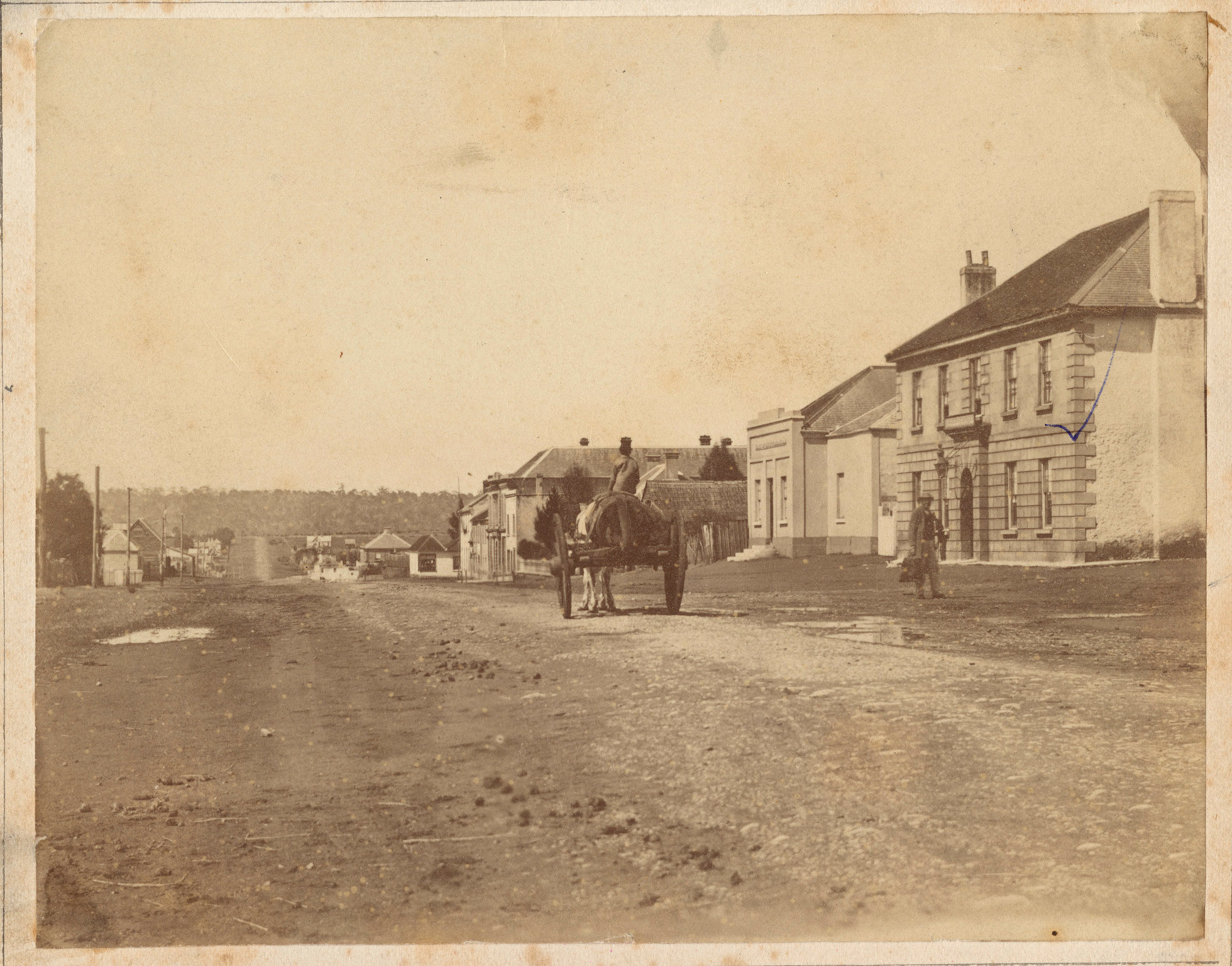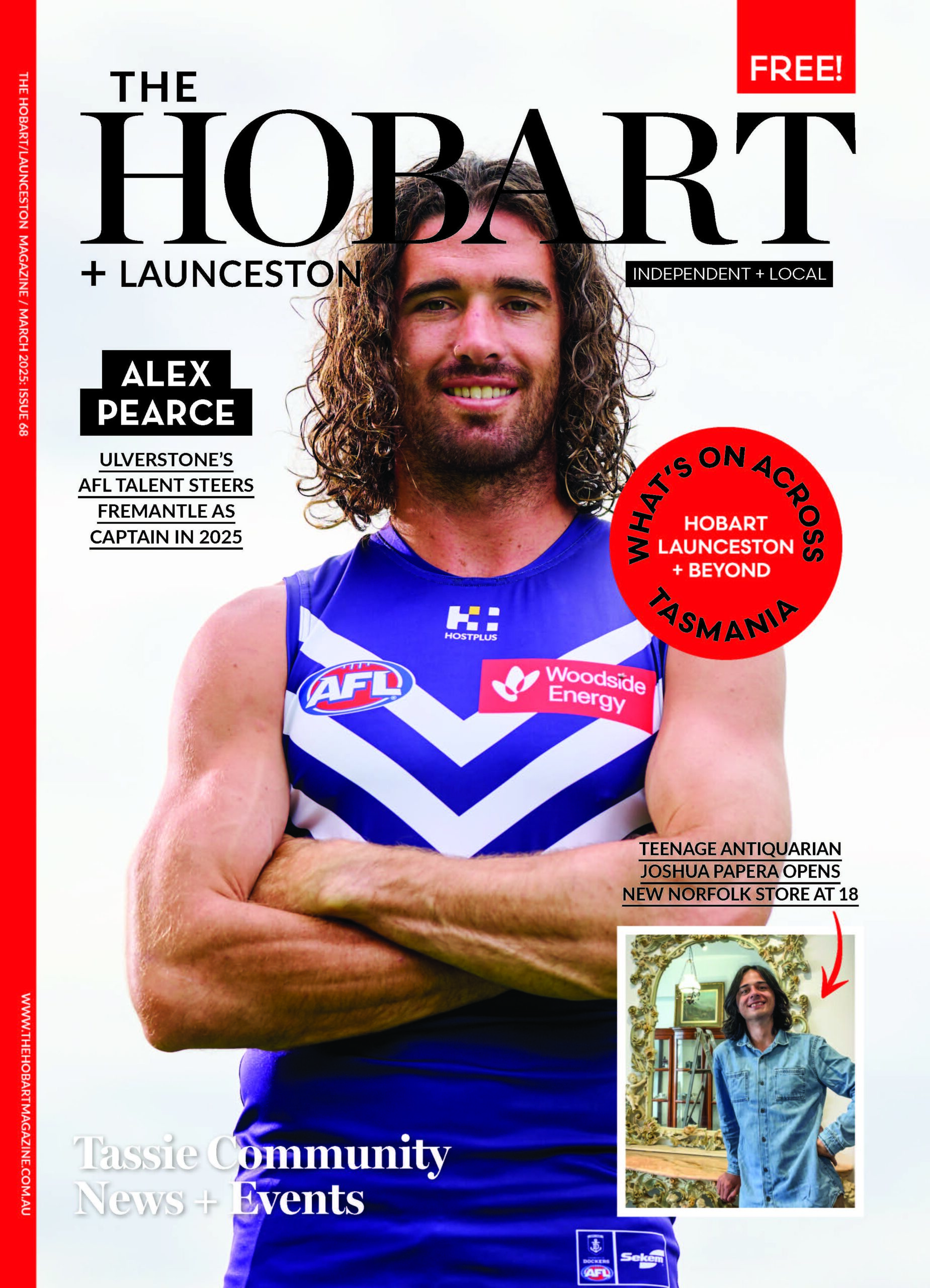A Road Most Travelled: Stories of the Midland Highway
by Peta Hen

When travelling from Hobart to Launceston and back again, one stretch of long, hilly, winding road generally comes to mind. Synonymous with roadworks and slow-moving caravans, the Midland Highway, or Midlands Highway, as it’s often referred to, never struck me as anything more than the road to the north of Tasmania – one with a compulsory coffee stop in Campbell Town, as is tradition.
That got me thinking. The Midland Highway has some incredible history dotted along its length with towns like Oatlands and Ross. Epping Forest is an interesting, not to mention spooky, place, and then there’s the sculpture trail between Tunbridge and Kempton. With my interest piqued, I decided to find out more about Tasmania’s road most travelled.
The Midland Highway began its life when surveyor Charles Grimes first pioneered the route from Hobart to Launceston in 1807. In 1811, Governor Macquarie followed the same route which took him over five days to complete. Talk about a trek! Known locally as ‘Hobart Road’ or ‘Main Road’, the predecessor to the Midland Highway was nothing more than a winding dirt track worn down by horses and carts. There were many detours travellers could take, one being via the Coal River instead of the Jordan Valley to avoid the trudge up Spring Hill. In 1821, construction on an official road between Hobart Town and St Peter’s Pass near Oatlands began under the charge of Major Thomas Bell of the 48th Regiment. While this original portion of the road, known as ‘Bell’s Line of Road’ (not to be confused with the road by the same name in the Blue Mountains!) is no longer part of the present-day Midland Highway route, parts of it can still be seen around the hilly terrain of the Southern Midlands. By 1850, fourteen years after the Bridgewater causeway was opened and the road finally sealed and macadamised with crushed stone, the road was revered by travellers as the preferred route for commuting through the middle of the state. By the 1930s, the 25-foot wide, two-lane highway was sealed, officially becoming known as ‘The Midland Highway’.
While work has continued on the Midland Highway until the present day, a history spanning over 200 years is impressive for a single stretch of road. During the 2000s, The Midland Highway was dubbed ‘The Heritage Highway’ with much of this heritage depicted in the shadowy entities that rise up out of the hills along the southern stretch of the highway. Two local artists, Folko Kooper and Maureen Craig initiated the Shadows of the Past project where sixteen silhouetted sculptures tell colonial stories of the region. When I saw these for the first time, I thought they were quite eerie. This is fitting as there are a number of spooky places along the Midland Highway.

Oatlands and Ross always come to mind. Stop in either town late at night during winter after the fog has set in and I bet your spine will be tingling. Rumours say ghostly apparitions have been spotted in many of the old Georgian windows in both towns. For me though, Epping Forest has the most spook factor. I was told once to never stop in Epping Forest. There is an old urban legend of a colonial headless horseman who was seen riding through the trees. The area was renowned for being a rife bushranger hideout which witnessed a lot of foul play in its day. For me, a much spookier urban legend from that part of the Midlands is ‘The Disappearing House’. Located just south of Epping Forrest at a junction in Conara called The Corners, Conara Inn became infamously known as ‘The Disappearing House’ due to it appearing and reappearing as travellers approached it along the original stretch of Midland Highway. This, of course, turned out to be an optical illusion caused by the hills of the landscape. Still, the idea is very creepy and the Conara Inn itself was said to be haunted.
Vanishing houses aside, the Midland Highway is a lot more than a two-hour stretch of bitumen between Hobart and Launceston. It’s a trail back in time that tells stories and legends about all who have travelled along its length. At least, that’s what I’ll be thinking the next time I bite into a pie at Banjo’s in Campbell Town.

